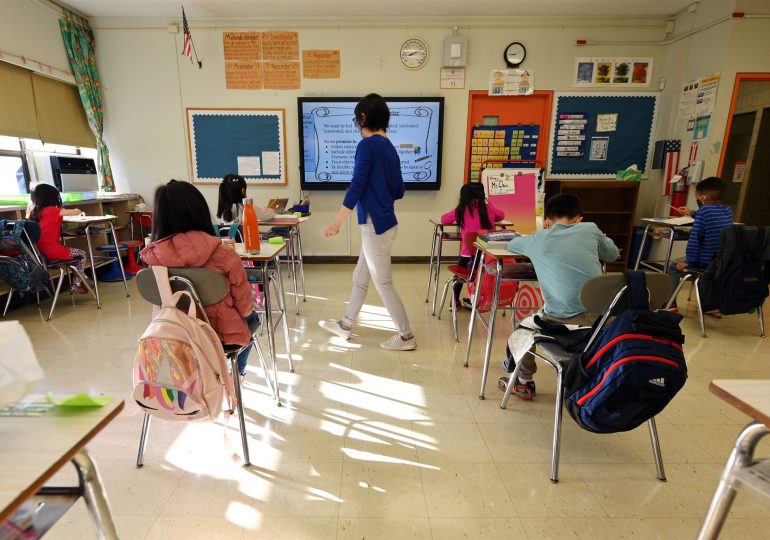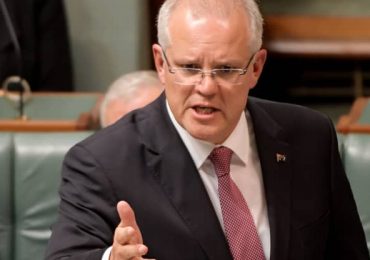During a standard history lesson this year, a student in Alexandra Hinkson-Dutrevil’s fourth grade class spontaneously burst into tears and revealed that his young cousin, who lived with him, was on a ventilator after having contracted Covid-19.
The student then revealed to the class on Zoom that he and the rest of his family had to leave the home they shared with the cousin in Frederiksted on the U.S. Virgin Islands to quarantine and that he wasn’t sure he would ever return to his home or see his cousin again.
Under normal circumstances, Hinkson-Dutrevil would have taken the child aside or referred him to another staff member so she could continue her instruction. Instead, she let the student finish, abandoned her lesson and began a discussion allowing other students to discuss their emotions about the pandemic.
It was a strategy she learned in a grief training program for teachers that she took a few weeks previously.
“The training made me realize that I shouldn’t dismiss anything for the sake of fulfilling a lesson plan. So many students are dealing with similar emotions, so it helped for them to share that with one another,” she said.
Hinkson-Dutrevil, who has been teaching for 20 years, said she has never experienced grief and trauma from students on this scale.
Students are coming to schools bearing tremendous amounts of grief, whether from the deaths of loved ones to Covid-19 or separation from family members and friends due to health restrictions or even the loss of continuity and certainty in everyday life.
The American Federation of Teachers, the nation’s second-largest teachers union, along with the New York Life Foundation, found in a survey released last month that only 15 percent of nearly 700 educators said they felt comfortable addressing students’ emotional needs, including anxiety, grief and trauma caused by the pandemic.
While support staff, such as social workers, school psychologists and other mental health professionals, have helped alleviate some of the emotional load from the pandemic, there’s a high level of cumulative grief, and teachers are finding a need to be more equipped.
Many school districts and professional organizations have offered grief training for educators, including the American Federation of Teachers, which has trained almost 250 educators after it received a grant from the New York Life Foundation.
“With the additional challenges students are bringing to the classrooms due to Covid, the current environment has illustrated with renewed urgency why getting these grief resources and training into the hands of committed educators is so critical,” said Heather Nesle, president of the New York Life Foundation.
According to research published in the The Proceedings of the National Academy of Sciences, for every 100,000 Americans who die of Covid-19, 100,000 to 125,000 kids under 19 will be bereaved.
Dealing with grief isn’t new for teachers who have a baseline for how to counsel children, but the nature of a pandemic has grossly changed the scale.
After the death of someone close, it’s common for children to be concerned about their own health and the health of those they care about, so a challenge right now is to reassure children about the health and well-being of others during the pandemic, said Eric Rossen, a psychologist and director of professional development and standards for the National Association of School Psychologists.
Before Covid-19, 1 in 14 kids had dealt with the death of a parent or a sibling by age 18, according to the JAG Institute, a nonprofit organization that researches grieving children and their families. With the Covid-19 death toll now at more than quarter-million in the U.S., the number is poised to increase.
The ability to allay those fears and assure safety for students who are experiencing loss is a bit of a challenge, Rossen said. There are also non-death losses that have had profound effects on children’s emotional health; they can include separation due to quarantine, inability to visit relatives or even loss of experiences like sports, graduations and other special occasions, he said.
“Children’s worldview about the stability, the accessibility of adults, the ability of adults to care for them and protect them is shifting,” he said. “There’s a great deal of value in teachers’ understanding what grief is, the impact of grief, what to say and what not to say when a student reveals their grief, and basic training can help with this.”
Rossen said grief can manifest in a variety of ways, including overaggressive behaviors, increased anxiety, difficulties with attention and concentration, disengagement and social withdrawal.
Julie Taylor, a counselor at an elementary school in Oregon, Ohio, said she has seen how much grief training has helped classroom teachers around her.
“I know some educators are uncomfortable addressing students’ emotional needs, especially the intense anxiety, grief and trauma that are ongoing right now. Many of them have lost their own loved ones, and they are re-experiencing those losses as they try to support the students in their classroom,” Taylor said. “But taking these sessions have made them feel more comfortable, more supported and better at communicating.”
Randi Weingarten, president of the American Federation of Teachers, said she has heard from countless educators, parents and students about the severity of trauma. “Their voices and the voices of others on the front lines make abundantly clear that our students are struggling and need us now more than ever,” Weingarten said.
Teachers have reported that they don’t feel fully trained, and they have said they often don’t talk to kids about grief or loss because they don’t know what to say, said the founder of the National Center for School Crisis and Bereavement, Dr. David Schonfeld, a developmental behavioral pediatrician.
Schonfeld has given dozens of training sessions to educators since the start of the pandemic, and he said he has noticed a marked increase in attendees and interest.
“It’s a difficult topic for some people. And if they don’t feel comfortable in it, they often avoid it. That’s a disservice, ultimately, to the student,” he said.
Teachers can do a lot to help kids who are grieving just by acknowledging losses, expressing their condolences and trying to provide support and assistance so the children can function as well as possible in school. Learning how to react and what to say is a good start to address grief, and training can help a lot, he said.
But Schonfeld cautioned that grief training isn’t meant to take the place of professional mental health counseling and that teachers still should be asking professionals for help.
While training will help teachers be initial touch points for kids, educators need to ensure that students have access to school-employed mental health professionals who understand learning and mental health needs within the educational context, Rossen said.
“If a student comes to you as a teacher and discloses a loss, hopefully some basic training prepares them on what to say, but after that they should ask for help,” he said. “Teachers should not have to do this alone.”
Leave a comment









